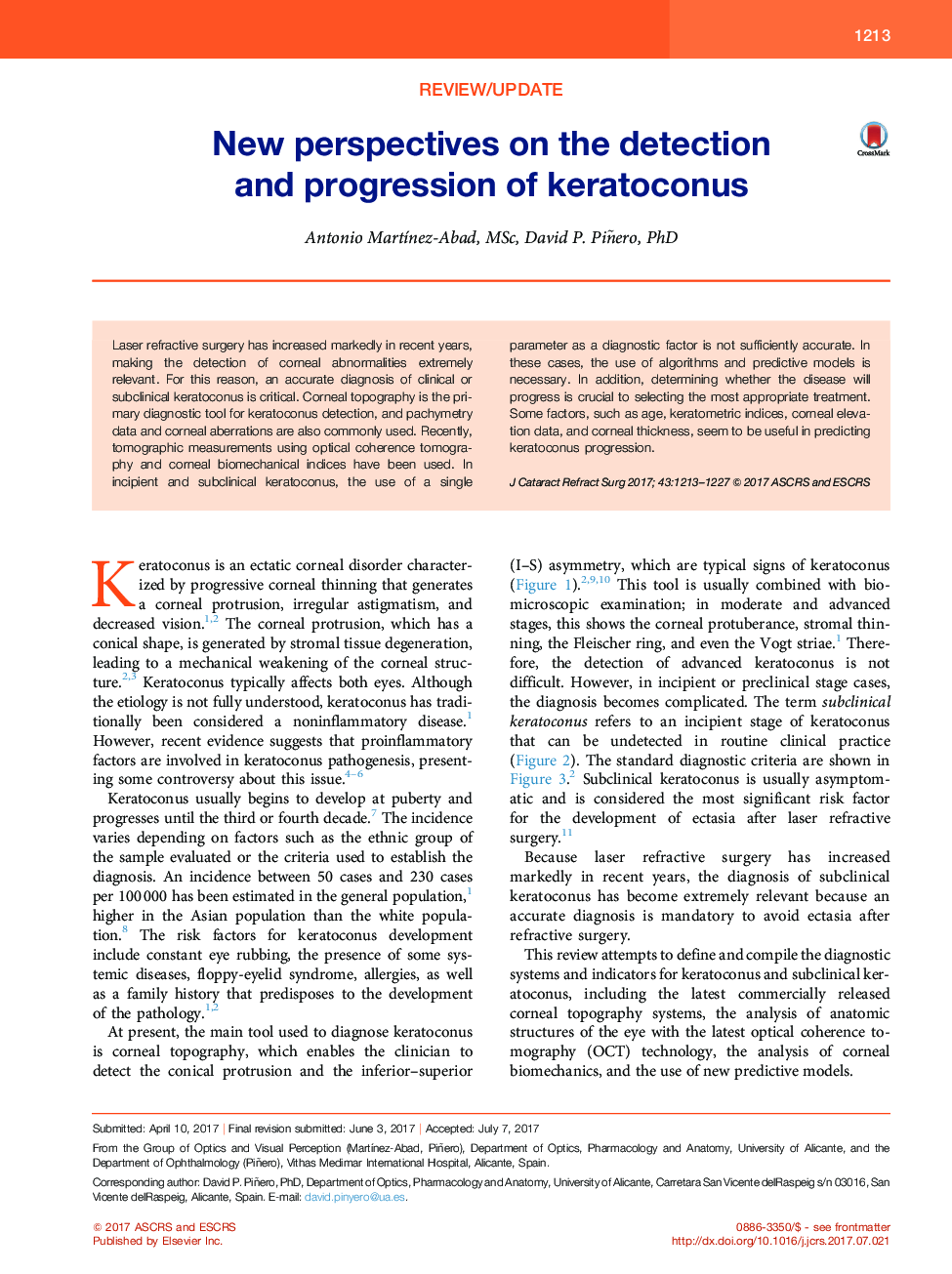| Article ID | Journal | Published Year | Pages | File Type |
|---|---|---|---|---|
| 5704201 | Journal of Cataract & Refractive Surgery | 2017 | 15 Pages |
Abstract
Laser refractive surgery has increased markedly in recent years, making the detection of corneal abnormalities extremely relevant. For this reason, an accurate diagnosis of clinical or subclinical keratoconus is critical. Corneal topography is the primary diagnostic tool for keratoconus detection, and pachymetry data and corneal aberrations are also commonly used. Recently, tomographic measurements using optical coherence tomography and corneal biomechanical indices have been used. In incipient and subclinical keratoconus, the use of a single parameter as a diagnostic factor is not sufficiently accurate. In these cases, the use of algorithms and predictive models is necessary. In addition, determining whether the disease will progress is crucial to selecting the most appropriate treatment. Some factors, such as age, keratometric indices, corneal elevation data, and corneal thickness, seem to be useful in predicting keratoconus progression.
Related Topics
Health Sciences
Medicine and Dentistry
Ophthalmology
Authors
Antonio MSc, David P. PhD,
